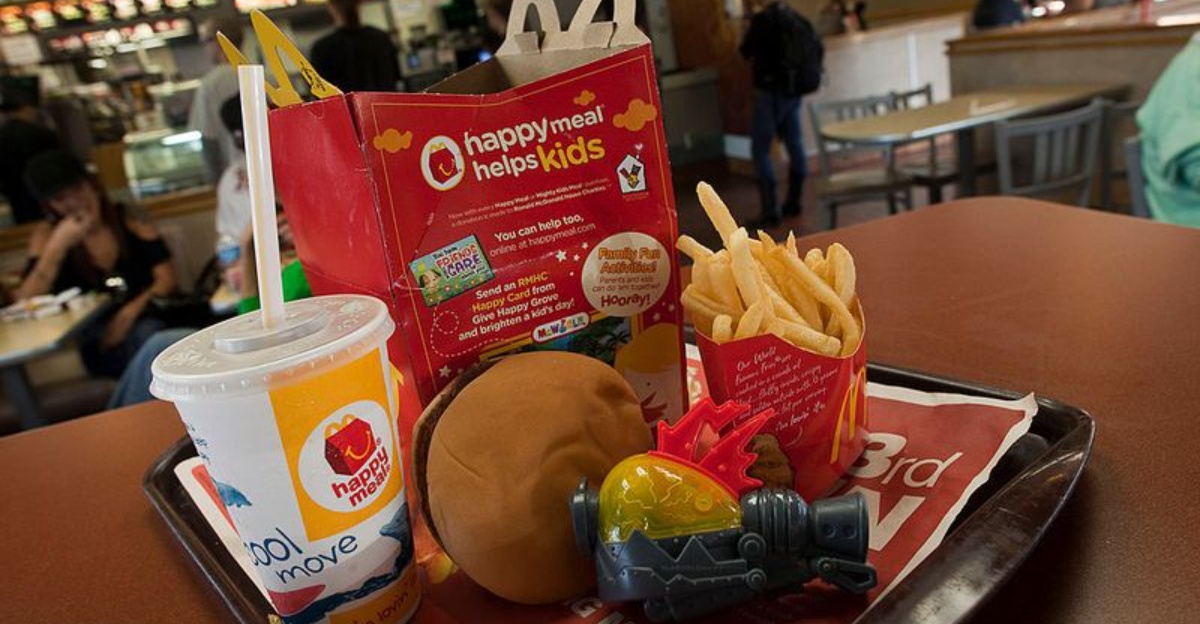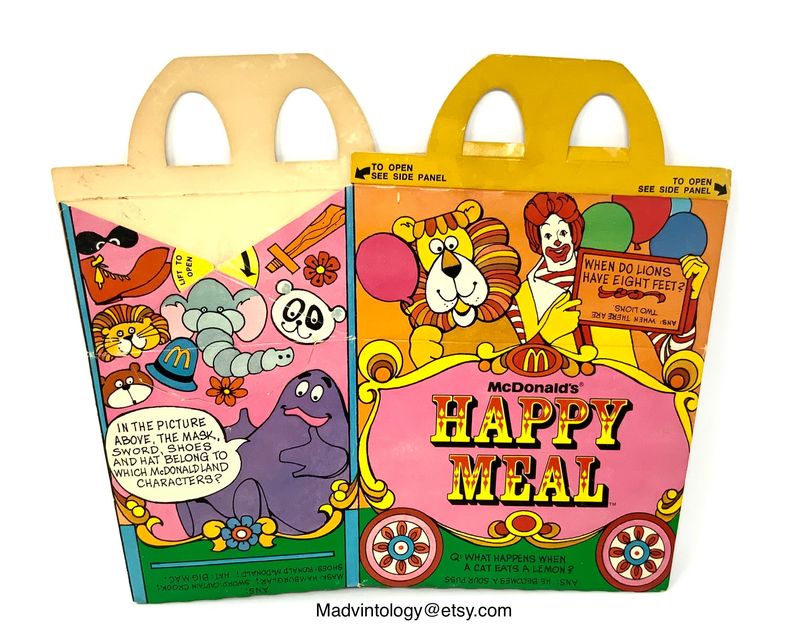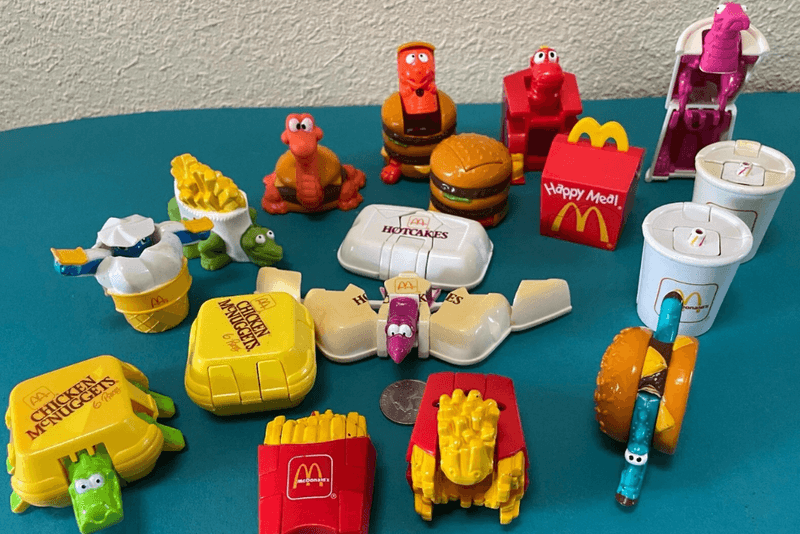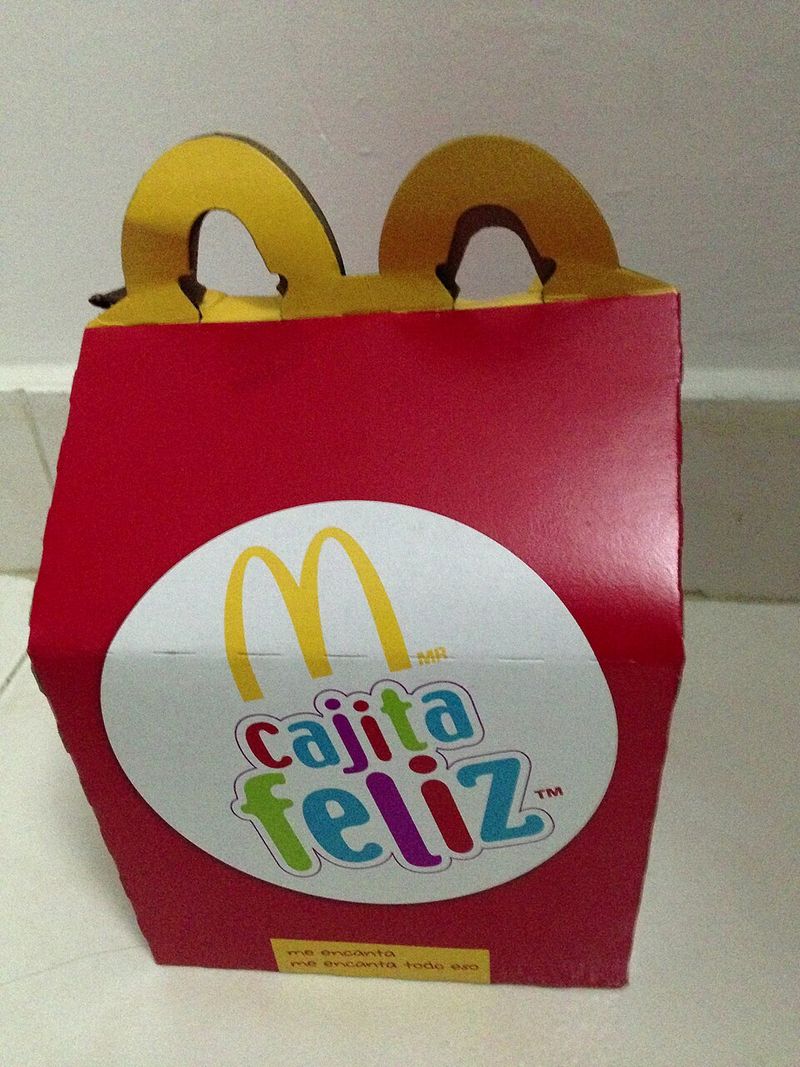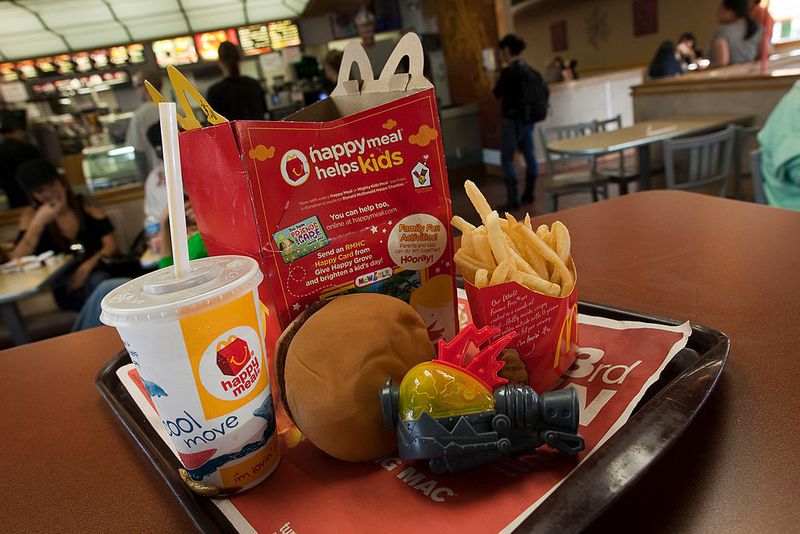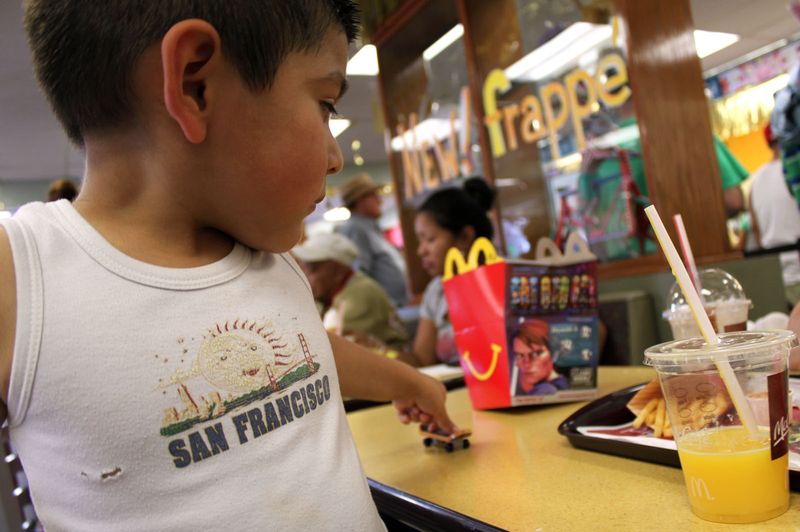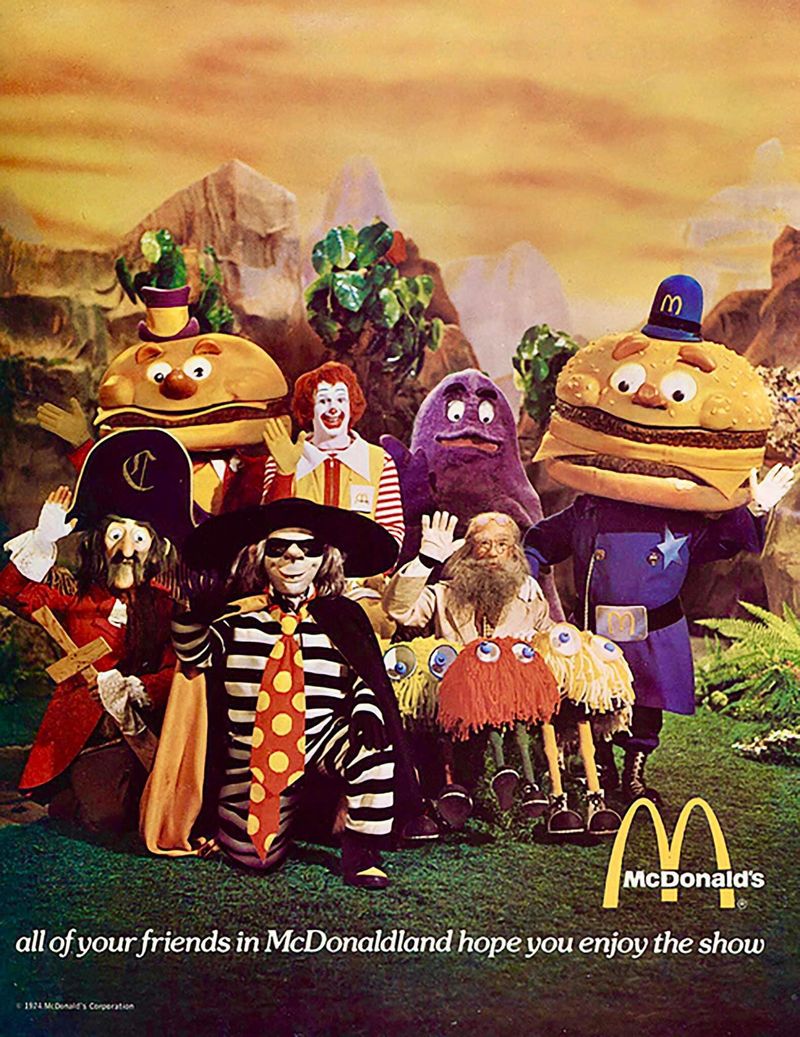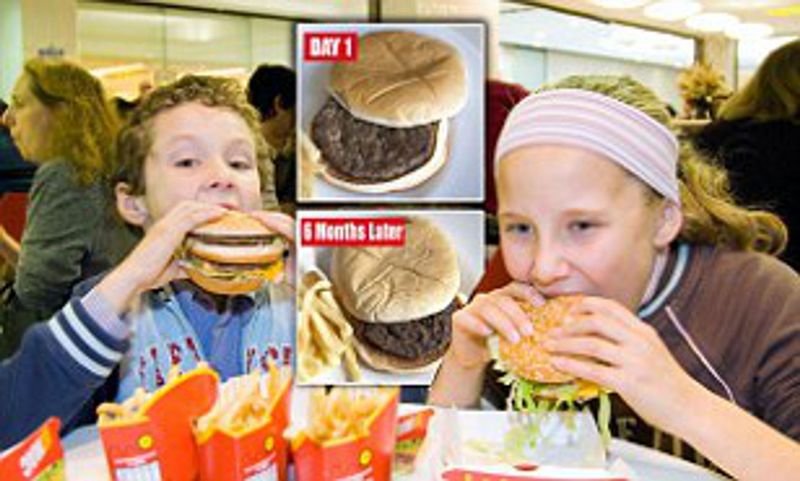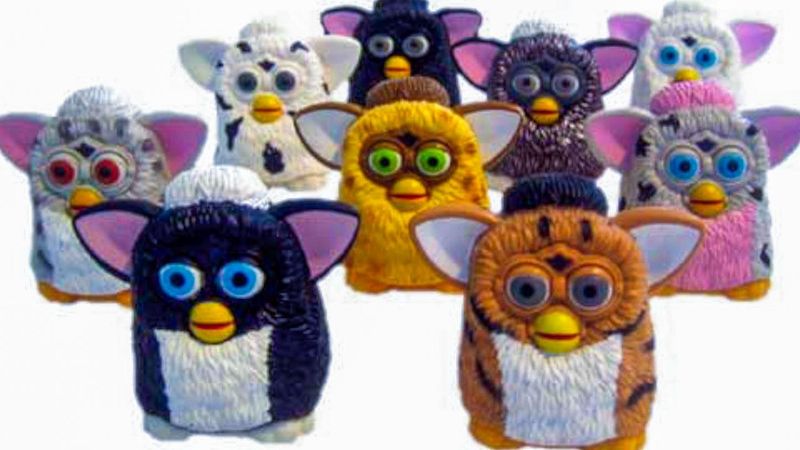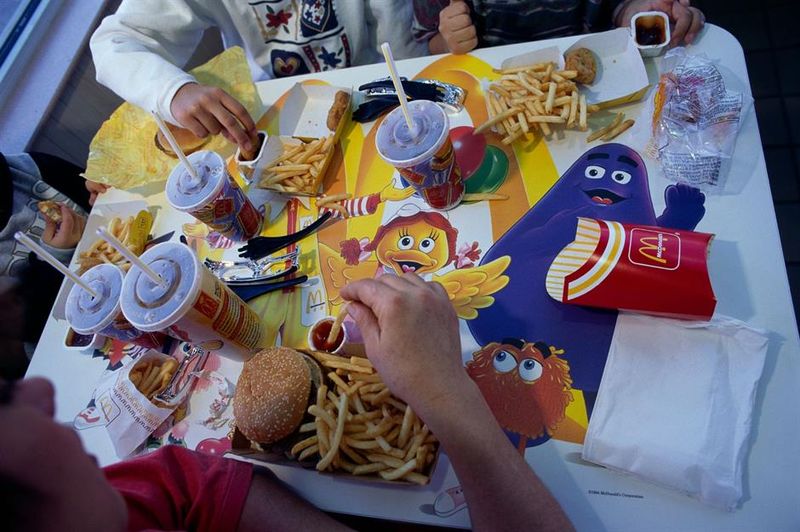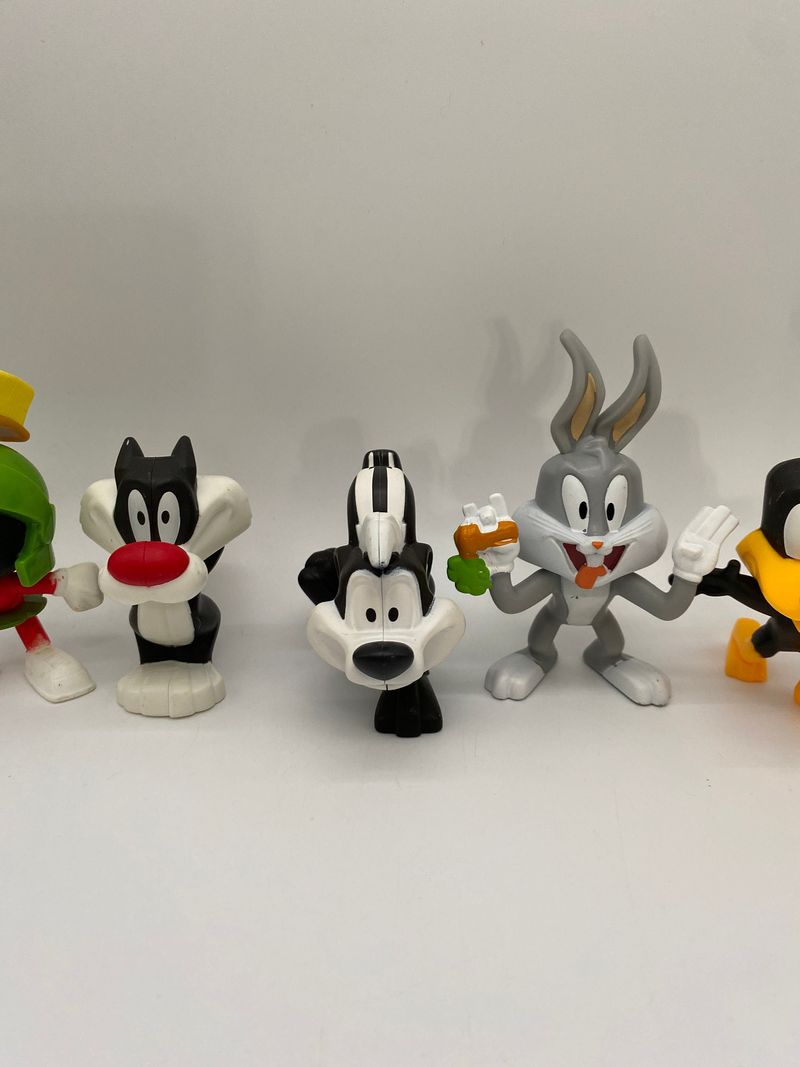Explore the intriguing and sometimes controversial journey of the McDonald’s Happy Meal, a staple in fast-food culture since its inception in 1979. From its initial burst of popularity to legal battles and nutritional critiques, the Happy Meal has been both beloved and debated. These seven items delve into the key moments and changes that have shaped its history.
1. The Birth of the Happy Meal (1979)
In 1979, McDonald’s introduced a concept that would revolutionize children’s meals forever: the Happy Meal. This “fun meal” for kids came with a burger, fries, drink, cookie, and a toy that captured young imaginations. Eating out became an event, not just a meal. The first toys were simple yet enchanting, like the McDoodler stencil. At only $1.10, it was an affordable treat, making childhood memories with each purchase. The Happy Meal quickly became a sensation, intertwining a sense of joy and wonder with fast food dining, setting the stage for its lasting impact on family dining.
2. The Toy Obsession & “Pester Power”
Children’s love for toys turned the Happy Meal into a powerful marketing tool, leveraging the concept of “pester power.” Kids begged their parents for meals, not for the food, but for the toys inside. By the 1990s, this strategy proved so effective that Happy Meals accounted for 20% of McDonald’s sales. The blend of food and play became an irresistible package for families. The anticipation of a new toy made every visit an adventure. Fast-food dining transformed into an experience woven with memories of excitement and collectibles.
3. The First Major Lawsuit (1987)
In a landmark legal battle in 1987, McDonald’s faced a lawsuit accusing it of deceptive advertising targeted at children. A concerned mother argued that the alluring toys misled kids into consuming unhealthy meals. Although the case was dismissed, it marked the beginning of numerous legal challenges the brand would face. This lawsuit highlighted growing concerns over marketing strategies aimed at children. It paved the way for future scrutiny and discussions about corporate responsibility in children’s health and advertising, underscoring the complex relationship between marketing and consumer choice.
4. The “Obesity Lawsuit” (2002)
In 2002, critics pointed fingers at the Happy Meal, blaming it for contributing to childhood obesity. The controversy led to a significant lawsuit against McDonald’s, accusing it of promoting unhealthy eating habits. In response, McDonald’s introduced healthier options like apple slices and milk, though they kept the beloved fries and toys. This move was both a nod to changing health consciousness and a strategy to maintain the Happy Meal’s fun appeal. It highlighted the balance between health and enjoyment in food marketing, sparking debates on corporate responsibility.
5. San Francisco BANS Happy Meal Toys (2010)
In a bold move in 2010, San Francisco banned offering free toys with meals that didn’t meet strict nutritional guidelines, targeting the Happy Meal. McDonald’s cleverly circumvented the ban by charging an additional 10¢ for the toy and including apple slices. This legislation was a turning point in addressing how fast food impacted children’s health. It sparked discussions on public health policies and corporate adaptation, showing how regulations could influence marketing strategies. The incident underscored the ongoing tug-of-war between health advocates and the fast-food industry.
6. The Creepy “McDonaldland” Lawsuits (1970s-90s)
In the 1970s, McDonald’s found itself entangled in a bizarre legal battle over its McDonaldland characters. The whimsical figures, designed to entice children, were alleged to have been copied from the TV show “H.R. Pufnstuf.” The lawsuit claimed these characters were eerily similar to those created by Sid and Marty Krofft.
This legal scuffle extended into the 1990s, showcasing the darker side of the fast-food giant’s marketing strategies. It highlighted the blurred lines between inspiration and imitation.
Despite the controversies, McDonaldland characters remained a memorable part of the Happy Meal experience.
7. The Infamous “Happy Meal That Wouldn’t Rot” (2010)
A curious blogger left a Happy Meal out for six months in 2010, discovering it hardly decomposed. This viral experiment shocked the public, raising concerns about preservatives in fast food. McDonald’s explained the phenomenon as a result of low moisture levels preventing mold, but the incident stirred widespread discomfort. It prompted a re-evaluation of what goes into fast food and sparked conversations about food quality and health implications. The viral nature of the experiment highlighted the power of social media in influencing public perceptions of food safety.
8. The Strangest Happy Meal Toys Ever
Some Happy Meal toys are remembered fondly, while others are simply strange. From talking potatoes to rainbow-colored trolls, these toys have left their mark.
In the ’90s, McDonald’s introduced a line of Transformers-style toys that baffled many. Later, a peculiar series of “Furby” variations emerged, each with odd colors and unexpected features.
Despite their oddity, these toys captured the imaginations of children worldwide, becoming coveted collectibles. Their uniqueness remains a testament to the creativity, or confusion, behind the Happy Meal toy selections over the years.
9. The Push for Healthier Happy Meals (2020s)
In the 2020s, McDonald’s faced pressure to offer healthier options in Happy Meals. Parents and health advocates demanded less sugar and more nutritious choices.
Responding to this, McDonald’s began including apple slices, reduced-sugar drinks, and smaller fries. The change was part of a broader initiative to combat childhood obesity and promote better eating habits.
This shift marked a significant departure from the traditional image of the Happy Meal, reflecting changing societal values. The move was widely praised, yet it sparked debates on responsibility and corporate influence on children’s diets.
10. The Future: No More Plastic Toys?
Facing environmental backlash, McDonald’s began phasing out plastic toys in countries like the UK and EU, opting for sustainable alternatives like paper toys, books, or plushies. This shift reflects growing eco-consciousness and a commitment to reducing plastic waste. While the U.S. still uses plastic toys, pressure mounts for change. The transition represents a new chapter in the Happy Meal’s evolution, balancing fun with environmental responsibility. This initiative not only meets consumer demand for sustainability but also sets a precedent for the future of marketing to children globally.
